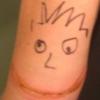Scientifically measuring denim "wear!"
-
hello 2024!
supertalk is free to browse as a guest. You need to be a member to participate in discussions or buy and sell on the classifieds.
Classifieds listings are now free for members.
supertalk is now upgraded to //// supertalk 8 ////
______________________________________
Current new membership is $US 12 ONE TIME FEE. NO RENEWAL FEE.
______________________________________
You can also become a premium superseller or supermember. Businesses who want to promote their brand and products need to become a supersponsor. superfuture® is privately owned and has been online continuously for 25 years. supertalk has been online for 21 years and is a digital cockroach that will survive all current and future apocalypses.
-
Top 10 Active Viewed Topics
-
- 26761 replies
- 6018828 views
-
- 24164 replies
- 5962929 views
-
- 24723 replies
- 4349422 views
-
- 22886 replies
- 3390568 views
-
- 13623 replies
- 3227916 views
-
- 10644 replies
- 3107119 views
-
- 21135 replies
- 2737845 views
-
- 13253 replies
- 2686220 views
-
- 8532 replies
- 2363288 views
-
- 11346 replies
- 2340867 views
-










Recommended Posts
Join the conversation
You can post now and register later. If you have an account, sign in now to post with your account.